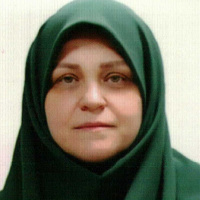Investigating the Prevalence of Head and Upper Extremity Deformities in Students with Special Need Print
Author(s):
Abstract:
Objectives
Musculoskeletal disorders are the most common childhood problems. The aim of the present study was to investigate the prevalence of head and upper extremity deformities in children with special needs.
Materials and Methods
The present research is a descriptive cross-sectional study with stratified sampling method. Ten percent of students with mental retardation, hearing impairment and sight impairment in the academic year of 2012-13 were selected for this study. There were 1194 persons in Tehran, 1526 people in the cities of the Tehran Province and 559 students in Alborz Province. In total, 3279 people participated in the study. Demographic questionnaire and a plummet were used for data collection. Data was reported using descriptive statistics.
Results
The results of the study revealed that "dropped shoulder" in girls of Alborz province with visual impairment with 100% had the highest rate and this abnormality in boys with visual impairment in the Tehran had the least prevalence. In the deformities of the head, lateral head bending with 76.6% in girls with visual impairment in Tehran, and forward head posture with 83.3% in boys with visual impairment in cities of Tehran had the highest incidence in comparison with others.
Conclusion
The prevalence of upper extremity deformities is high in students with special needs including mental retardation, hearing impairment and sight impairment. It is necessary to diagnose these deformities in time.Keywords:
Language:
Persian
Published:
Archives of Rehabilitation, Volume:16 Issue: 4, 2016
Pages:
286 to 293
https://magiran.com/p1506879
مقالات دیگری از این نویسنده (گان)
-
The Combined Effect of Teaching a Healthy Diet and Physical Activity on the Management of Obesity and Overweight Students: A Clinical Trial
Jalal Moludi *, Seyed Mostafa Nachvak, Amir Saber, Mozhgan Farahbod, Farhad Karimi
Journal Of Isfahan Medical School, -
The Status of Rehabilitation in Iran: Barriers and Facilitators
, Iravan Masoudi Asl*, Seyed Jamaleddin Tabibi, Mohammad Kamali
Iranian Journal of Ageing,


